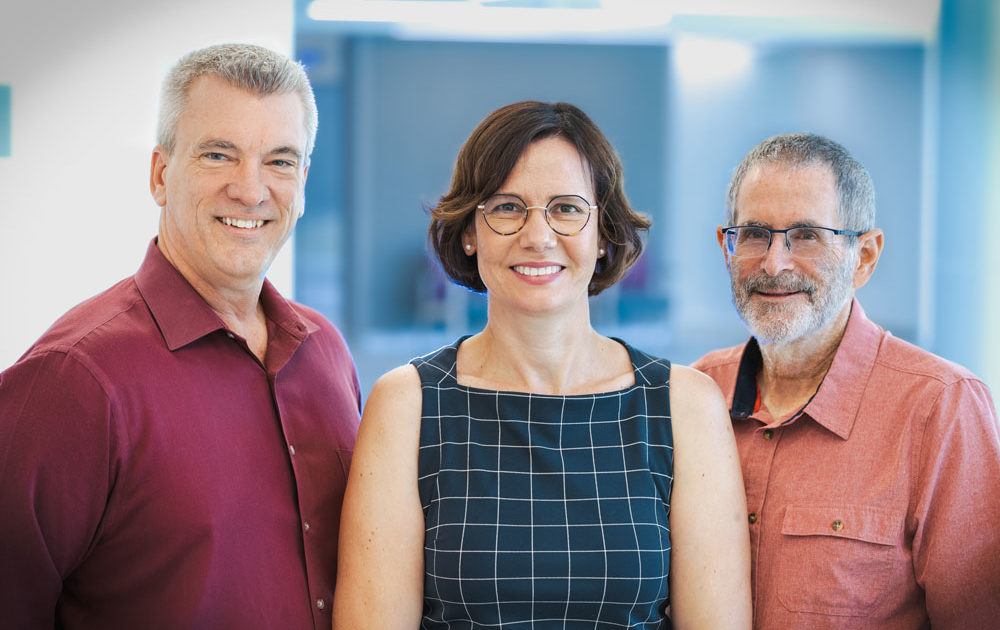
Barrow Faculty Named to National ALS Strategic Planning Team
Three amyotrophic lateral sclerosis (ALS) experts at Barrow Neurological Institute have joined a special team formed by the National Institute of Neurological Disorders and Stroke (NINDS) to help guide the direction of ALS research nationwide.
NINDS—which is part of the National Institutes of Health (NIH)—named Rita Sattler, PhD, a professor in the Department of Translational Neuroscience at Barrow, as steering committee co-chair of its ALS Strategic Planning Team. To serve as working group members, the organization invited Robert Bowser, PhD, chief scientific officer and John and Betty Van Denburgh chair of neuromuscular disease, and Jeremy Shefner, MD, PhD, neurologist and emeritus chair of the Department of Neurology.
In January, NINDS asked the ALS community—including patients, families, caregivers, advocates, scientists, and clinicians—to provide their feedback on the most important knowledge gaps and promising opportunities in ALS research.
Based on nominations received, NINDS appointed a diverse group of stakeholders to its ALS Strategic Planning Team to review the feedback and develop research priorities for the disease. NINDS hopes this will better position researchers to discover new ways to prevent, diagnose, and treat ALS.
I strongly support and advocate the goals of this new ALS Strategic Plan, which is to define properties that will accelerate translational research and strategies toward novel ALS therapies. It will also provide recommendations on how to improve the quality of life for people living with ALS and how to strengthen multi-institutional collaborations and partnerships to achieve these goals.
Rita Sattler, PhD, Professor, Department of Translational Neuroscience
ALS, also known as Lou Gehrig’s disease, causes the nerve cells responsible for muscle movements to deteriorate and die. Over time, people with this neurodegenerative disease can lose their ability to move, speak, eat, and breathe. Most people with ALS die from respiratory failure, usually within three to five years of symptom onset.
Barrow physicians and scientists are performing cutting-edge studies to better understand the causes of neurodegeneration, to identify biomarkers for diagnosing ALS and predicting its progression, and to evaluate potential new treatments.
“I am extremely honored to have been invited to co-chair this important effort developed by NINDS/NIH,” Dr. Sattler said. “I strongly support and advocate the goals of this new ALS Strategic Plan, which is to define properties that will accelerate translational research and strategies toward novel ALS therapies. It will also provide recommendations on how to improve the quality of life for people living with ALS and how to strengthen multi-institutional collaborations and partnerships to achieve these goals.”
The team will present their suggested research priorities at a virtual meeting in October, which will be free and open to the public. Based on input received at the conference, the working groups may modify these priorities. They will then share the plan online for formal public comment before presenting it to the National Advisory Neurological Disorders and Stroke Council for approval.
“NINDS has been instrumental in advancing ALS research,” Dr. Shefner said. “I’m honored to have the opportunity to contribute to a strategic plan that will facilitate more rapid progress and ultimately lead to effective treatments for patients with this disease.”
